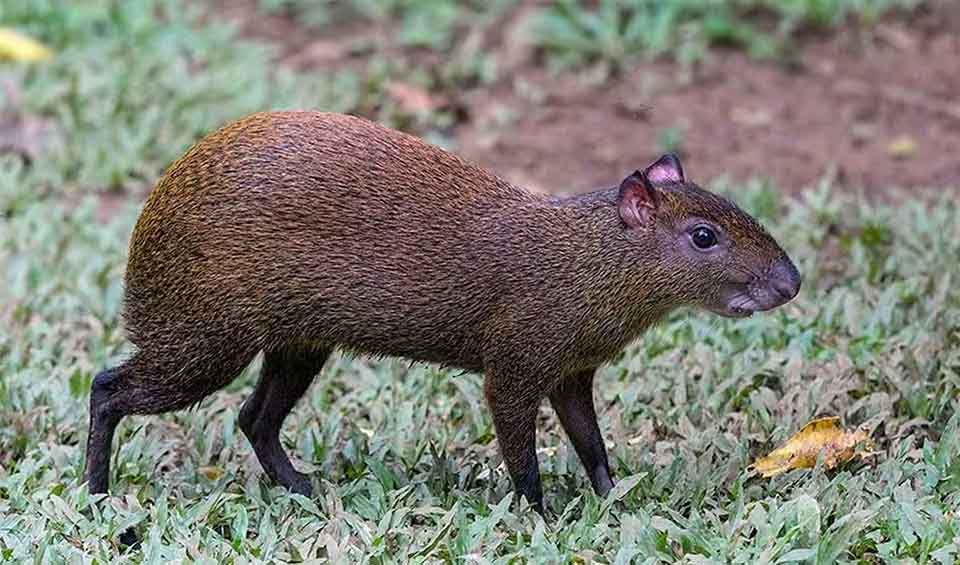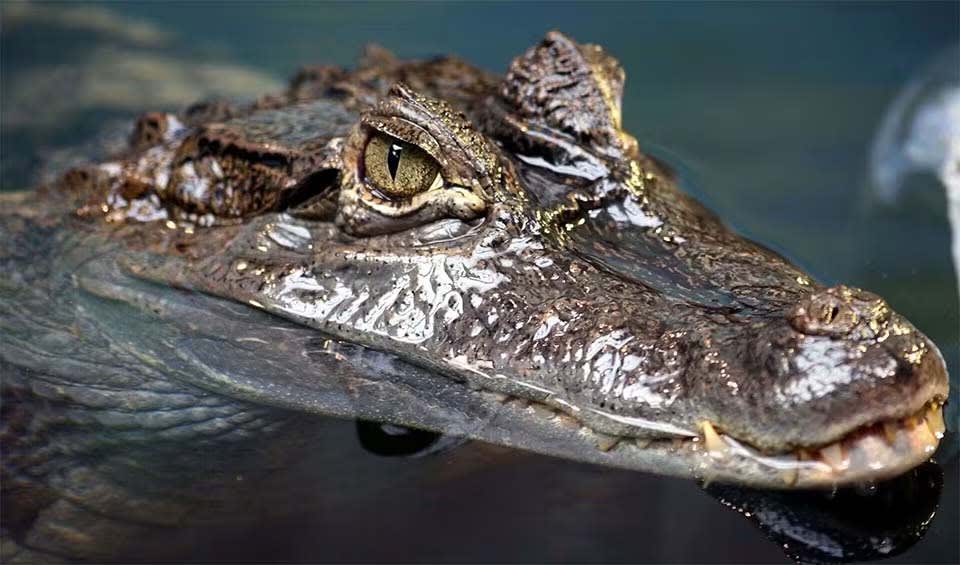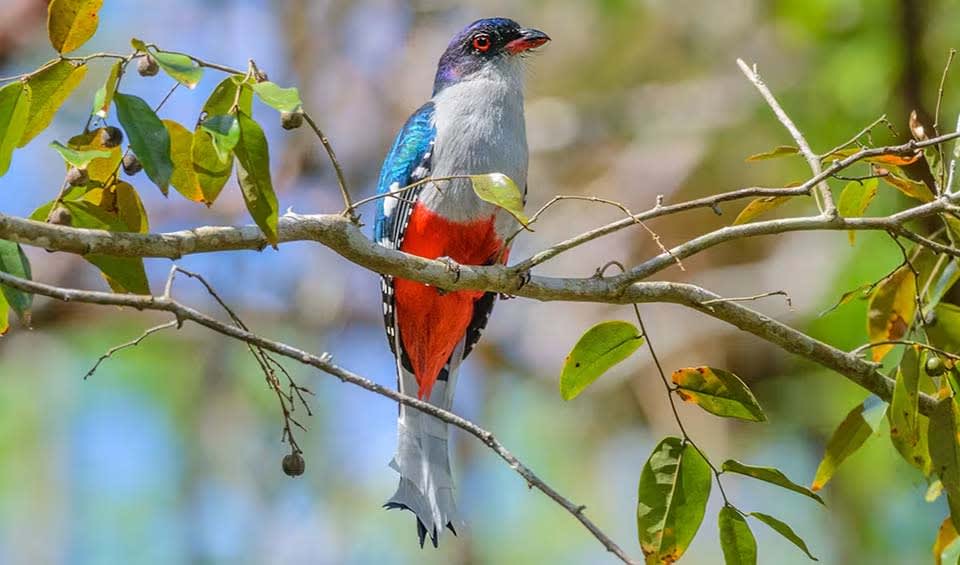Cuba, the largest island in the Caribbean, is located south of the United States and east of Mexico’s Yucatán Peninsula. It spans an area of about 110,860 km² (42,803 mi²) and includes the main island of Cuba, the Isla de la Juventud, and several smaller archipelagos. Diverse landscapes, including mountainous regions such as the Sierra Maestra in the southeast, fertile plains in the west, and extensive coastlines with numerous beaches and coral reefs characterize the country.
Cuba’s varied landscapes support a rich array of biodiversity. The country’s tropical climate and diverse habitats, including forests, wetlands, and coastal areas, provide homes for various flora and fauna. Cuba is known for its unique species, such as the Cuban crocodile, the bee hummingbird (the smallest bird in the world), and the Cuban solenodon, a rare nocturnal mammal. The country’s marine environments, particularly around the Jardines de la Reina archipelago, are teeming with marine life, including vibrant coral reefs, sea turtles, and many fish species.
Four pillars elaborated:
Cuba takes pride in its extensive network of more than 250 natural reserves, which include marine protected areas (MPAs) safeguarding its rich marine ecosystems. These MPAs cover a range of coastal wetlands, submerged areas, and marine habitats, crucial for the preservation of marine life. Demonstrating a strong commitment to conservation, Cuba manages these areas through its National System of Protected Areas (SNAP), which covers significant portions of the country, including mangroves, forests, and wetlands. The SNAP plays a crucial role in conserving biodiversity and promoting sustainable use of natural resources. Land Management
Land Management
Cuba’s dedication to conservation is further underscored by its recent expansion of marine protected areas, adding a new area spanning 728 km² (281 mi²). This expansion aims to enhance protection for marine species like hawksbill turtles and coral reefs.
Cuba’s biodiversity faces significant threats from both human activities and natural factors. Human-induced stressors include extensive tourism, mining, overfishing, deforestation, poaching, the introduction of invasive species, and various forms of pollution, such as sedimentation from deforestation and agricultural chemicals. Additionally, natural threats like rising temperatures, more frequent droughts and heavy rains, fires, and hurricanes, exacerbated by climate change, pose significant challenges to Cuban biodiversity. Threats to Biodiversity
Threats to Biodiversity
Since 2005, Cuba has been assessing its biological diversity to develop management plans, monitor their effectiveness, and evaluate hurricane damages. The first Action Plan on Protected Areas wrapped up in 2008, with the second plan for 2009-2013 now in progress. Cuba now boasts 253 protected areas, including 10 new ones, with 105 having five-year management plans and yearly operational plans. Among these, 45 plans have official approval. These areas cover nearly 20% of the country, with significant coverage of marine ecosystems, coral reefs, native flora and fauna, including many endangered and endemic species. Capacity and Governance
Capacity and Governance
Despite progress, goals related to managing invasive species, addressing climate change’s impact on biodiversity, and ensuring fair access to genetic resources remain partly achieved.
Approved in 2019, the Biodiversity Finance Plan institutionalized BIOFIN in Cuba, aiming to secure sustainable funding for biodiversity conservation and align with the National Economic and Social Development Plan until 2030. The Integrated Watershed and Coastal Area Management approach prioritizes conserving and sustaining biodiversity in Cuba through effective management of watersheds and coastal areas. Future Trends
Future Trends
Biodiversity
Cuba, the largest island in the Caribbean, is renowned for its exceptional biodiversity and varied ecosystems, including tropical rainforests, savannas, wetlands, and extensive coral reefs. Its geographical isolation and diverse habitats have resulted in a high level of endemism, with many species found nowhere else in the world. The island’s terrestrial biodiversity is particularly rich, with numerous endemic species. The Cuban crocodile, found in the Zapata Swamp and the Isla de la Juventud, is one of the notable examples. The Zapata Swamp, one of the largest and most important wetlands in the Caribbean, supports a diverse array of wildlife, including the Cuban hutia, the Cuban solenodon, and a variety of bird species such as the Zapata wren, Zapata rail, and the Cuban trogon, which is the national bird. The mountainous regions, such as the Sierra Maestra and Sierra del Escambray, are home to unique flora and fauna, including the Cuban tody and various species of orchids and ferns.Cuba’s coastal and marine environments are equally rich in biodiversity. The coral reefs surrounding the island, particularly those in the Jardines de la Reina and the Gulf of Batabanó, are some of the most pristine in the Caribbean. These reefs host a variety of marine life, including colorful corals, fish, sea turtles, and sharks. The mangrove forests and seagrass beds along the coastline provide essential habitats for many marine species and help protect the shorelines from erosion. The archipelago’s waters are also important for the West Indian manatee and various species of dolphins and whales.
In the table below are the number of known species in several main groups, how many of these species are Threatened with extinction, and how many of them are Endemic (unique to Cuba only):
| Species (World rank) |
Threatened | % Threatened | Endemic | % Endemic | |
|---|---|---|---|---|---|
| Mammals | 66 (#151) | 10 | 15.2% | ||
| Birds | 292 (#129) | 18 | 6.2% | 28 | 9.6% |
| Reptiles | 181 (#54) | 24 | 13.3% | 2 | 1.1% |
| Amphibians | 71 (#48) | 49 | 69.0% | 52 | 73.2% |
| Fishes | 1,105 (#40) | 72 | 6.5% | 23 | 2.1% |
| Plants | 7,500 (#43) | 179 | 2.4% | 3,000 | 40.0% |
mammals
Central American agouti
This widespread cute-looking creature is also known as the ‘gardener of the forest’
West Indian manatee
Largest of the sirenians, divided into two subspecies, the Florida manatee in the US and the Antillean manatee in the Caribbean
Water buffalo
The “living tractors of the East”—vital in traditional agriculture, particularly in Asia
birds
Brown pelican
The smallest of the eight pelican species
Cuban tody
The gem-like beautiful bird with a large head, short tail, and a long bill is found only in Cuba and its adjacent islands
Crested caracara
Got the looks of a hawk with the scavenging habits of a vulture
reptiles
Spectacled caiman
You might get the worst scare of your life if you see the crimson glow in the eyes of these creatures at night
Loggerhead sea turtle
One of the largest and strongest sea turtles in the world
Mediterranean house gecko
Resilient creature that can thrive in human-dominated environments
National Animals
Cuban trogon
Cuba’s national bird, symbolizing the freedom and identity of the Cuban people














